What is Cytotron ?
Cytotron is the trade name of the Rotational Field Quantum Magnetic Resonance Device –RFQMR- that is developed by Centre for Advanced Research and Development (CARD) division of Scalene Cybernetics in Bangalore, India. It is a new device developed for Tissue Regeneration, Degeneration and Repair for the purposes of treating several chronic or degenerative diseases such as Cancer & Arthritis. The treatment modality is non-invasive, painless and free from side effects. In the Clinical studies it has been demonstrated that Cytotron is very effective in curing certain conditions such as a damaged knee by regenerating the cartilage tissue or stopping and reversing the growth o a tumor in cancer.
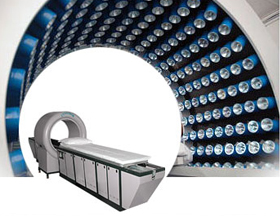
Cytotron - developed by the
CARD Research Center
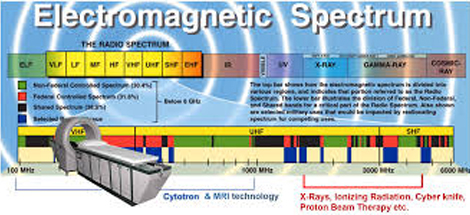
The Technology Behind
RFQMR produces a high power multi-frequency, high energy spinning quantum electromagnetic beams in the lower end of the EM spectrum in the Sub-Radio and Near-Radio Frequencies. In this frequency range, the effects causes predominantly non-thermal effects because the intensity is not high enough to significantly change tissue temperature. Non-thermal effects are direct interactions of RF with biological cells.
The Cytotron Device will deliver precise dose of RF beams in the 1Khz to 10 MHz Range in the presence of high instantaneous magnetic field, which is then focused in the near field, using special antennae.
CARD engineers by simulation established that, when a biological Cell is exposed to such HF / RF under an instantaneous magnetic field should alter many cell parameters, including its resting Trans Membrane Potentials (TMP).Many Cellular activity is closely linked with the TMP. TMP plays an Important role in the synthesis of many proteinsand it plays a significant role in the basic mechanism of mitosis (cell division) control. Powerful Mathematical Models and real time simulation in combination with MRI data of the tissue is used to precisely alter transmembrane potentials of target tissue. Altering the Trans Membrane Potential (TMP) is a complex process. However the TransMembrane potential is
- -70 to -90 mV is the TMP in Healthy Cells.
- -40 to -60 mV when Infected.
- -20 to -30 mV in Cancer
- “0” when the Cell dies.
How Cytotron Is Operated
There are 288 Guns in RFQMR, that shoots these beams, that are precisely focused on the target area. These beams alter the cell membrane potential, thus starting or stopping Cell Division (Mitosis) in a controlled manner. The desired exposure characteristics (like the cartilage to bone gap, skin to cartilage distance, Name, age, gender, height and weight etc.,) are fed into the computer. The computer then computes various wave front and spin frequencies, pulse amplitudes, field strength etc. There after the operator precisely focuses the beams on the required site.
Currently 3 Clinical Trials on 490 patients treated with RFQMR for Osteoarthritis and Cancer has been completed with outstanding outcomes. The Cytotron System has been cleared regarding the relative safety standards. Several systems has been positioned in different countries to provide health services.
Conditions Treateable with Cytotron
Initially The Clinical Studies has been focused on Osteoarthritis and Cancer. As Tissue engineering can be applied to almost every part of the body and treats at the very basic level the potential applications will be possible will be :
- Stimulation of Angiogenic Growth Factor and promoting Coronary and peripheral pro-angiogenesis
- Osteo-arthritis
- Relieving pain, and disability due to trauma
- Carpal tunnel syndrome
- Osteoporosis
- Pain management / Fibromyalgia
- Migraine
- Diabetes, Diabetic neuropathy
- Problem wounds healing
- Tinnitus
- Drug resistant epilepsy
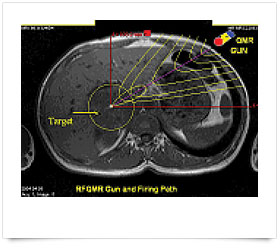
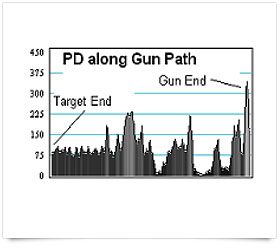
A dose planning for a Cancerous Tumor
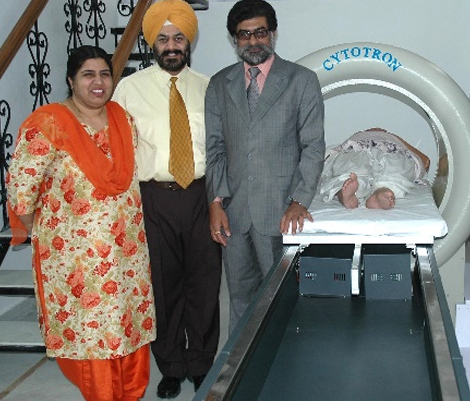
The Inventor of Cytotron: Dr. Kumar
The team that developed Cytotron after years of research at CARD was headed by Dr Rajah Vijay Kumar DSc. Dr Kumar is a pioneering researcher and an opinion leader in the field of Biophysics and Radiobiology. Specialised in Medical Engineering, he has worked for more than fifteen years on regenerative tissue engineering and high speed biological data acquisition, modeling and simulation of the human cardiovascular system. The many patents held by him include the Realistic Geometry Cartographic Imaging (RGCI) which finds applications from medical science to tsunami detection, and the Cytotron which is considered an important milestone in radiobiology and tissue engineering. His work on Nanotechnology has sparked off a new technique in selective tissue destruction with a "nanoblaster" that is undergoing laboratory trials. He is currently the Director and Chief Scientific Officer of the Center for Advanced Research & Development (CARD) and the Chairman of Scalene Cybernetics Limited, Bangalore, India.
